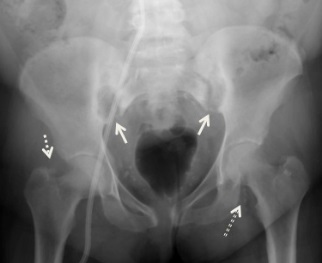
The sacroiliac joints represent the connection between the sacrum and the left and right iliac bones. The sacrum is the terminal part of the vertebrae and unlike the rest of the spine the sacrum comprises 5 vertebrae that are fused together which makes the sacrum immobile. The iliac bones are two large bones that form the pelvis. The range of movement within sacroiliac joints is limited and their primary role is to support the entire weight of the upper body when we are erected. The cartilage of the sacroiliac joints may eventually wear and the person may develop sacroiliac dysfunction.
Causes of Sacroiliac Dysfunction
As it is the case with any other joint in the body even sacroiliac joints contain cartilage. This cartilage allows some movement but its primary role is to act as shock absorber. In case of damage of the cartilage or if it is worn away, the bones start to rub on each other which eventually results in degenerative arthritis. This is the most common cause of sacroiliac joint dysfunction.
Furthermore, sacroiliac joint dysfunction is more frequent in pregnant women. Hormones produced during pregnancy allow ligaments to relax and relaxation of ligaments holding sacroiliac joints increases motions in these joints which results in increased stress and abnormal wear of the joints.
Sacroiliac joint dysfunction also affects people suffering from gout, rheumatoid arthritis, psoriasis and ankylosing spondylitis. And finally, sacroiliac joint dysfunction may occur in case of any condition that alters the normal walking pattern. Some of the conditions that interfere in normal walking pattern are one leg longer than the other, pain in the knee, pain in the hip etc.
Clinical Characteristics of Sacroiliac Joint Dysfunction
The leading symptoms of sacroiliac joint dysfunction is pain in the lower back of the back of the hips. The pain may be also localized in the groin area or in thighs. It tends to intensify with standing and walking and may significantly improve if one is lying down. It may be very difficult to determine the exact source of pain. Apart from pain the person may also experience stiffness and burning sensation in the pelvis.
Treatment for Sacroiliac Joint Dysfunction
Injections are an excellent way for both, diagnosing and treating the condition. The person may experience alleviation of pain that lasts one day or even longer. The injections are repeated on monthly bases or one receives three injections per year. Pain associated with sacroiliac joint dysfunction may be additionally alleviated with NSAIDs while oral steroids such as Prednisone are only administered for short period of time. Further help is achieved by physical therapy, a sacroiliac belt and some activities such as yoga, manual therapy and Pilates. In case none of the previously mentioned provides with optimal pain relief one may need to undergo surgery.
















-Symptoms,-Diagnosis,-Treatment_f_280x120.jpg)
Your thoughts on this
Loading...